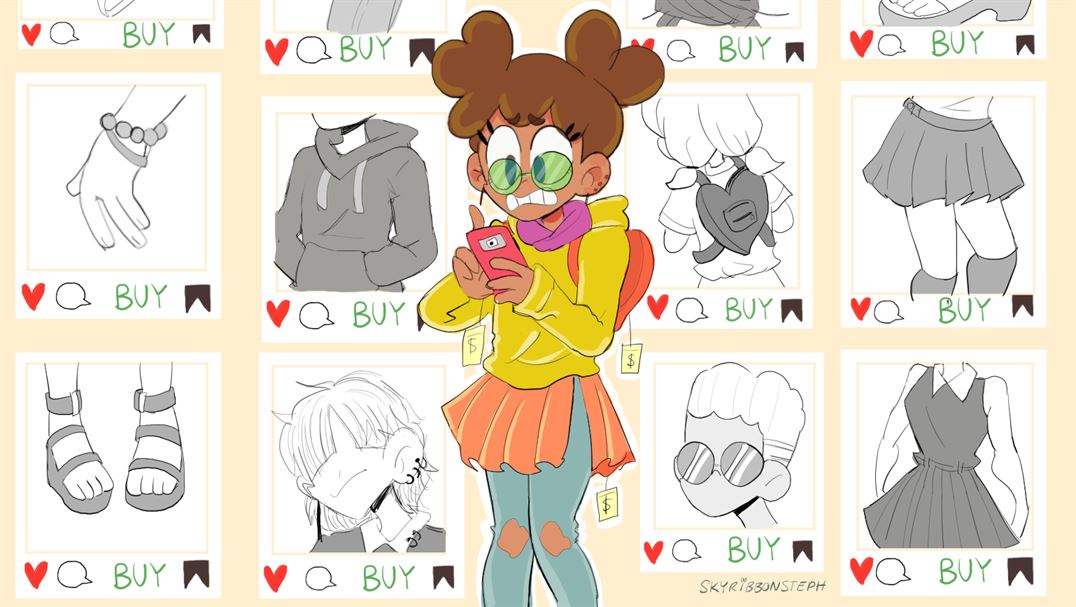As the journey of self-discovery seeps into young adulthood, it’s no secret that clothing can reveal who you are as a person. Fashion is an important form of self-expression and identity.
However, with the increasing rise of fast fashion and quick microtrend cycles there arises a question: how can you be yourself if you’re not dressing for yourself?
Establishing the difference between trends versus microtrends is critical. A trend describes the rising popularity of a specific article of clothing or style, and it maintains its popularity for a seemingly long period of time. A microtrend involves a specific article of clothing or style that quickly becomes popular and then unpopular in a short amount of time.
Microtrends are common on social media platforms such as TikTok, where they last for approximately a month. Creators will make a video with their outfits on display, and the people who view the video are in awe of what the person is wearing and want to imitate it.
However, it’s evident there is widespread confusion on whether someone genuinely likes a specific style or if they only like how it looks on other people.
Constantly seeing different people with visually pleasing clothing styles is difficult to ignore. Young minds are easily influenced to buy unnecessary articles of clothing they don’t need, creating overconsumption of clothes.
Once these fast-paced trends are over, many people find themselves with several clothing pieces they regret buying. A lot of the clothing pieces that can count as microtrends aren’t timeless. Once they lose their popularity, they become officially outdated and unsavory.
For example, the Hockney dress by House of Sunny went viral in the midst of the coronavirus (COVID-19) pandemic, with the brand accepting pre-orders for the third drop of the dress in July 2020. But just weeks later, the TikTok fervor that had sold it out twice died down, and it was promptly abandoned.
COVID-19 has worsened this situation. Many people found themselves buying clothing in bulk to wear when they go out in public, only for those clothes to be unpopular once they finally had the chance to wear them.
As much as eyes can be the window to the soul, so can clothing choices. When establishing who you are as a human being, it’s critical to note that how a person dresses ties into their personality.
The lack of individuality microtrends cause is astronomical. It’s indisputable that there are scores of teenagers who dress almost identical to each other to fit in. Dressing similarly to someone you saw on the internet without taking into account what you like personally is like trying on different masks every day, withholding your true self from the public eye in order to cater to others.
In hopes to discover your own style, it’s important to spend less time on social media apps like TikTok, especially the subsections that involve clothing and fashion. Perhaps you might even completely delete those apps.
Pinterest is another well-liked app for sorting out different ideas for many things, and one of the app’s most common uses are boards dedicated to clothing. Completely erasing all the pins in clothing-centered boards and starting fresh is a positive step forward in the journey to finding your fashion identity.
When considering buying a new piece of clothing, it’s crucial to ask yourself: “Do I genuinely love this?”
An effective strategy to consider is to save the piece of clothing you want to buy and return to it in at least three weeks. If you find yourself no longer being interested in the item, then it’s clear it would have been an irresponsible impulse purchase. However, if you’re still interested in the item, go ahead and buy it!
As fun as social media can be, it’s important to realize comparison to others will never do anyone any favors. Taking the time to figure out your likes and dislikes without the conflict of interest from others is rewarding, not only to your personal being but to your pockets as well.



